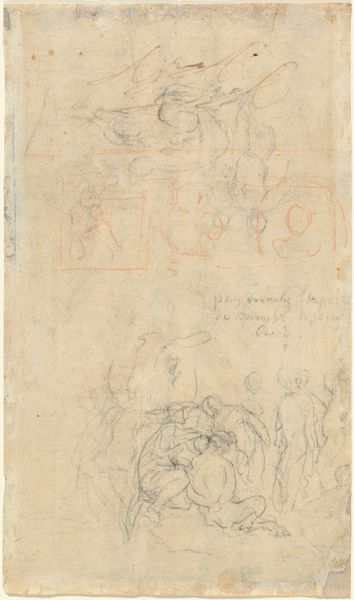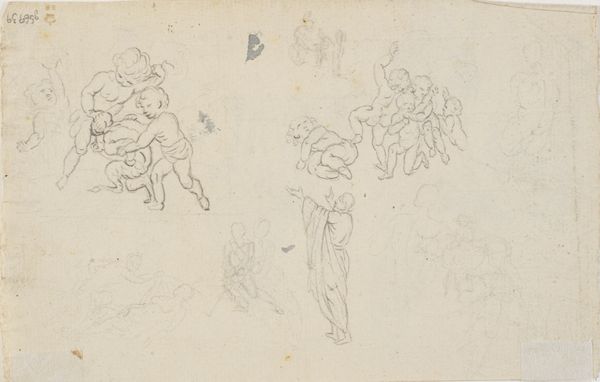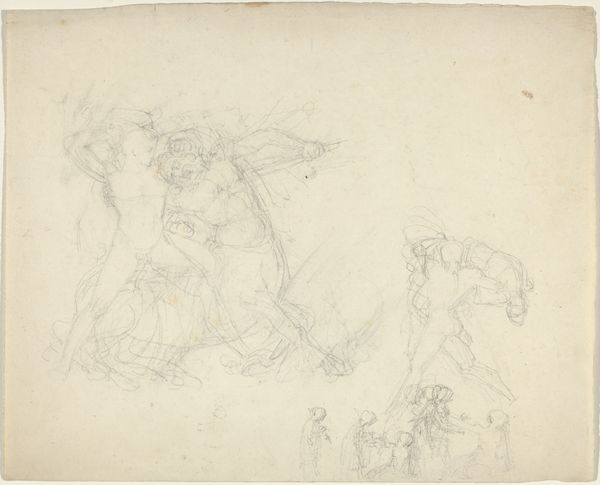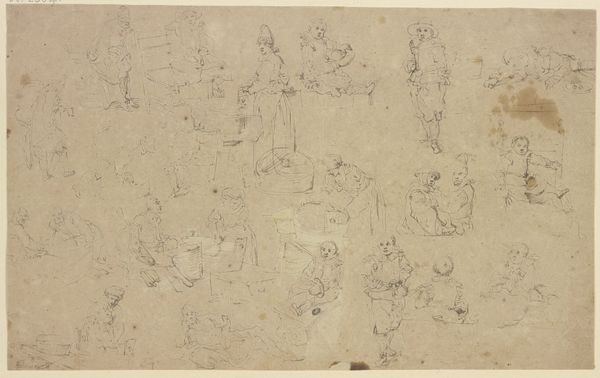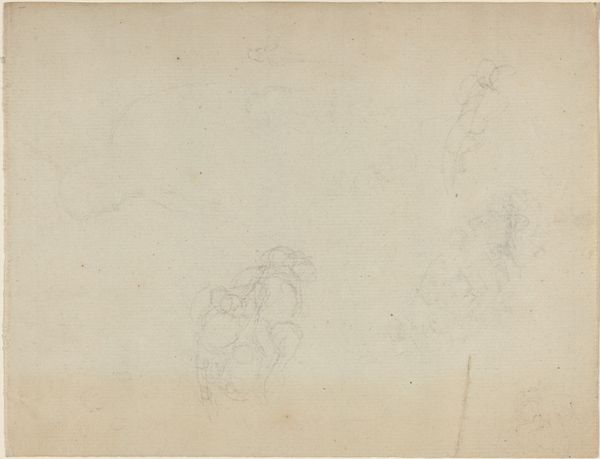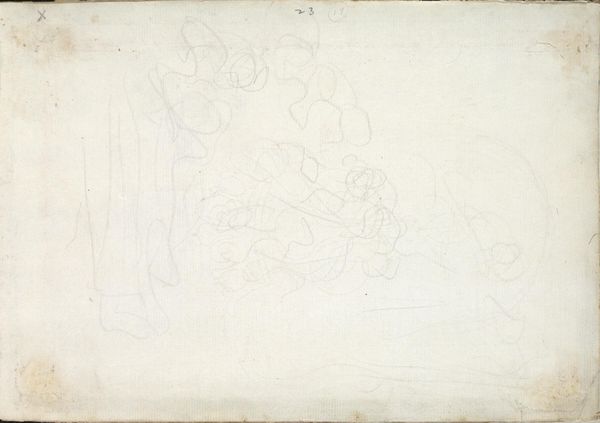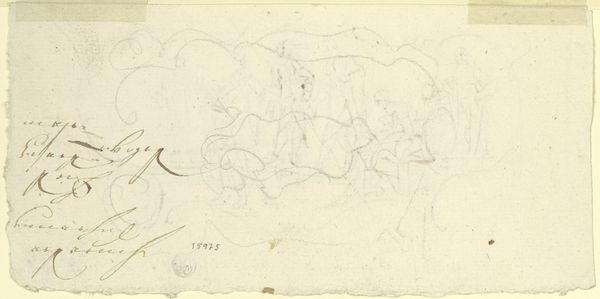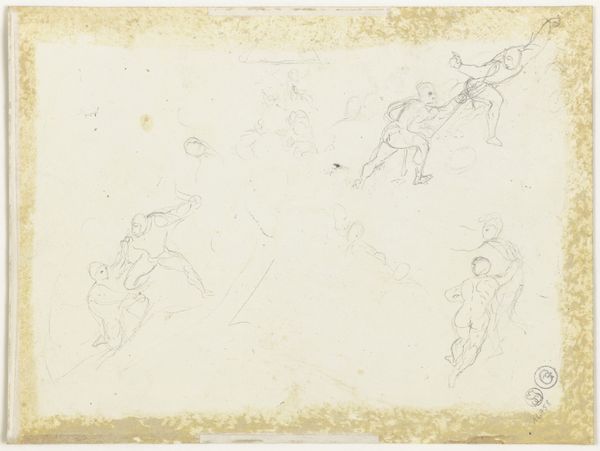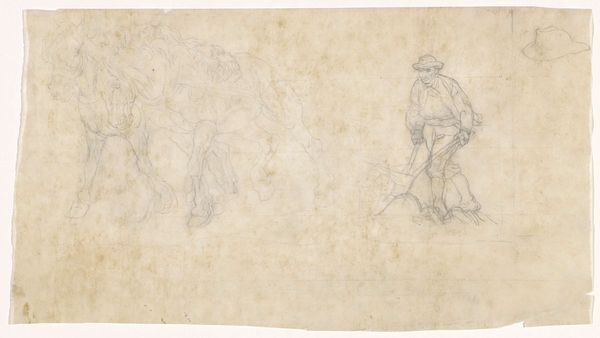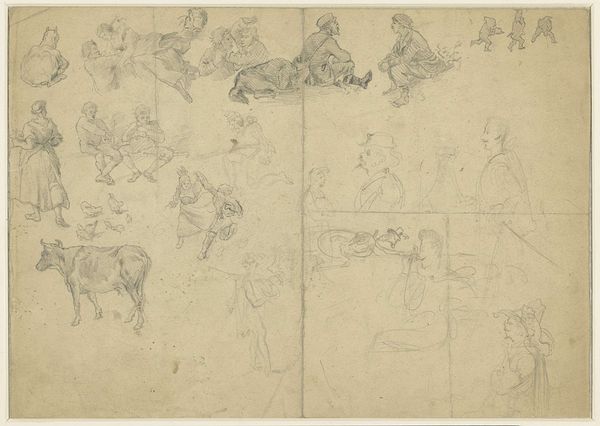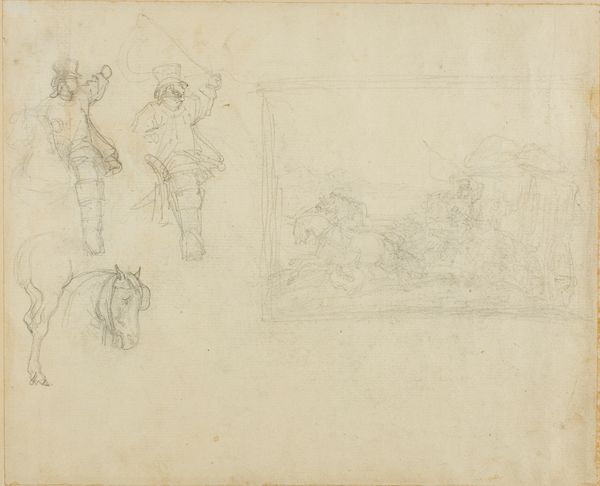![Sheet of Studies [recto and verso] by John Flaxman](/_next/image?url=https%3A%2F%2Fd2w8kbdekdi1gv.cloudfront.net%2FeyJidWNrZXQiOiAiYXJ0ZXJhLWltYWdlcy1idWNrZXQiLCAia2V5IjogImFydHdvcmtzL2Q0ZjY5YTFhLWIyMGEtNGJlYS04MDNlLWRkYTU1ZTljYjc2Ni9kNGY2OWExYS1iMjBhLTRiZWEtODAzZS1kZGE1NWU5Y2I3NjZfZnVsbC5qcGciLCAiZWRpdHMiOiB7InJlc2l6ZSI6IHsid2lkdGgiOiAxOTIwLCAiaGVpZ2h0IjogMTkyMCwgImZpdCI6ICJpbnNpZGUifX19&w=3840&q=75)
drawing, paper, pencil
#
drawing
#
figuration
#
paper
#
pencil
Dimensions: overall: 12.9 x 20 cm (5 1/16 x 7 7/8 in.)
Copyright: National Gallery of Art: CC0 1.0
Editor: This is "Sheet of Studies" by John Flaxman, created with pencil on paper. It’s a collection of figural sketches that feel both classical and intimate. What stands out to you? Curator: I'm drawn to the materiality of this work. Look at the paper, its visible wear and tear, the staining. These aren't signs of degradation, but rather evidence of the drawing's function within Flaxman’s studio practice. It was a surface of experimentation. Editor: So, less about the finished aesthetic, and more about how it was made? Curator: Precisely. Think about the pencil itself. A humble tool, mass-produced and readily available. It democratizes art making. Flaxman uses this everyday material to explore monumental themes of the human form. How does this tension resonate with you? Editor: I see it. It challenges the idea that great art requires expensive materials or elaborate techniques. The skill lies in the hand and the concept. Curator: Exactly! Consider also, that such studies aided production of prints, ceramics, and even sculpture for widespread distribution to new consumers in his time. This raises questions about art's role within a growing consumer culture. Editor: That makes me see this less as a private sketch and more as a crucial step in a broader, almost industrial, process. Something like early mass production? Curator: That’s right. The physicality of the paper, the accessible pencil, the reproduction for commercial uses - all speaks to how the artwork was a commodity shaped by its mode of production and the culture of the time. Editor: I see now how focusing on materials and processes opens up new interpretations of what art can be. Thanks, I wouldn't have thought to look at it that way. Curator: It's about recognizing art as a product shaped by tangible forces of its creation and use. This perspective provides new depth into art objects often regarded for beauty alone.
Comments
No comments
Be the first to comment and join the conversation on the ultimate creative platform.
